Aprilia’s Portugal MotoGP domination was Ducati’s biggest warning yet
Marco Bezzecchi turned around a fairly average performance in the sprint to utterly dominate the main race at the MotoGP Portuguese Grand Prix. On a weekend in which Ducati looked set to claim a double with Alex Marquez, Aprilia’s steep step forward on Sunday was a major warning for MotoGP’s dominant brand that success is getting harder to hold onto…

“Starting from pole would not have changed anything.” Alex Marquez offered a pretty candid assessment of his and Gresini’s Portuguese Grand Prix, as he had to settle for second on a Sunday in which all signs suggested he was going to be the rider to beat.
MotoGP’s very first 21st round of a season last weekend began with the 2025 championship runner-up sweeping both of Friday’s practice sessions. Riding without the limitations of a standings position to think about, Marquez looked in total control of Portimao’s undulations.
He confidently claimed that the lap times were coming easily for him. He and Gresini needed to find a bit of stability over bumps, but he was heading towards his first double in MotoGP. A crash in qualifying kept him fifth on the grid, but he brushed that off in the sprint to fend off KTM’s Pedro Acosta by just 0.120s in the best half-distance race we’ve seen of the new era.
And that margin’s slenderness was somewhat exaggerated, with Marquez admitting afterwards that he was riding too conservatively in the final laps to allow Acosta the opportunity to put some pressure on him.
With pace in hand, Sunday’s 25-lap grand prix was teed up to be Marquez’s to lose. And yet, he did. In fact, the Marquez that set off from fifth on the grid on Sunday didn’t look anything like the rider that won the sprint just 24 hours earlier.
Similarly, Marco Bezzecchi didn’t look like the same rider who slid from pole on Saturday to third in a sprint where he simply didn’t have an answer for Marquez or Acosta.
But the factory Aprilia rider grabbed the holeshot after a close race to Turn 1 with Acosta, and led from start to finish to claim a second grand prix win of the season. It also marked Aprilia’s third of the campaign, a first for the brand, and secured it runner-up spot in the constructors’ standings. Also a first. And Bezzecchi is now all but assured of third in the riders’ championship, which breaks more new ground for Aprilia.
In nine of the last 15 rounds, since Bezzecchi took his first win for Aprilia at Silverstone, the RS-GP has seen a podium in at least one of the two races on a grand prix weekend. Most of those have been at the hands of Bezzecchi.
Since the summer break, the Aprilia has come on as an even stronger, more consistent threat to Ducati, with the bike’s famed agility now matched to better braking stability. The end result is a package that needs some fine-tuning from the Friday of a race weekend, but tends to end it with podium-worthy pace.
It’s not perfect, as the off-colour Malaysian Grand Prix proved. And that’s the key area where Aprilia needs to tighten up: on its bad weekends, it has to be on the bottom of the podium or near it - not out of the top 10.
But the way Aprilia brushed off its Malaysian Grand Prix woes, and the significant step it made from Saturday to Sunday in Portugal, while Ducati only lurched, has fired off the biggest warning yet to its Italian rival that the Noale brand has positioned itself as a tangible threat for 2026.
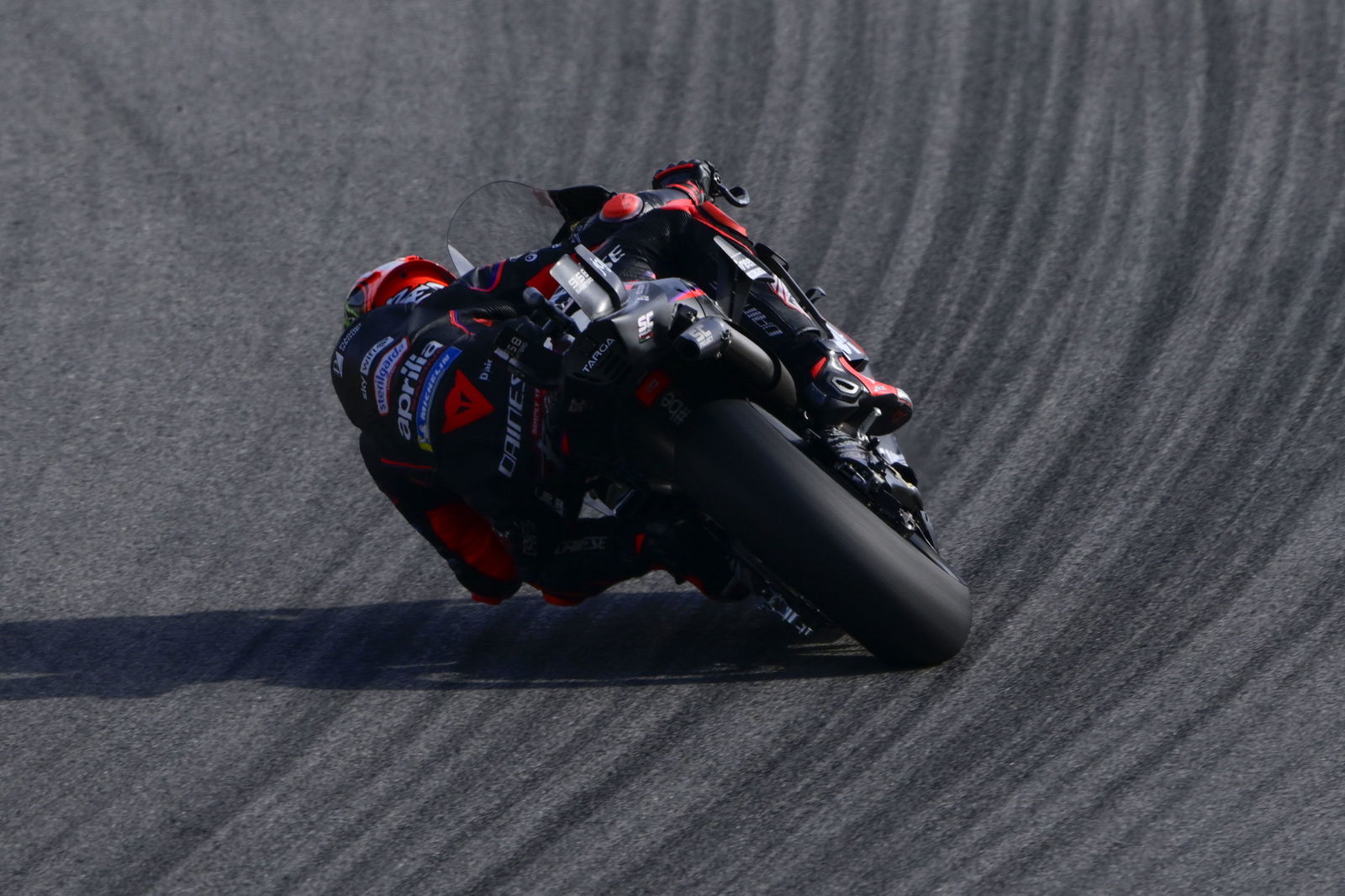
How Marco Bezzecchi stole Ducati’s thunder in Portugal
The fast and flowing Portimao has always been tough on tyres. It’s why, for all of the pre-weekend predictions, KTM and Pedro Acosta’s hopes of breaking their duck in 2025 were remote. The RC16, while quick in the 21-year-old’s hands, burns through rear tyres like I raid a biscuit tin.
Acosta’s ability to rally in the sprint was impressive, and he did so again in the grand prix as he pressured Alex Marquez for second. But even with a more conservative approach to his riding in order to manage his rubber, the KTM had a lack of grip in the early stages on fresh tyres that scuppered Acosta’s chances.
Therefore, the 2025 Portuguese Grand Prix was always set up to be a duel between Ducati and Aprilia. Which Ducati was the question? Alex Marquez's form at Portimao wasn’t bad, but it wasn’t stunning either. Prior to last weekend, he hadn’t had a podium at the Algarve venue.
Aprilia carried strong from into Portimao from last year’s Portuguese Grand Prix, where Maverick Vinales won the sprint and was denied a grand prix podium by a late mechanical issue. The technical nature of the track favoured Marquez and his GP24, which was the bike that won the grand prix last year and was already dialled into the circuit.
Couple that with the numerous fast right-handers that contribute to Portimao’s layout, a big opportunity was on the cards for Alex Marquez. Through to the sprint, he looked like he was making it count.
But then the tables turned.
While Aprilia made a big step, which Alex Marquez “saw in the warm-up they’d found something”, Gresini and Ducati lost the edge that they’d enjoyed through the fast right corners at the end of the lap.
“I was not able to turn the bike” like Bezzecchi was doing with his Aprilia, said Marquez, who worked his way up to second at the start of the second lap ahead of Acosta. The pace at the front was a bit hotter than expected, though the medium rear tyre was holding up well.
Around five laps in, Bezzecchi’s pace was good but not much better than Marquez’s. The gap between them hovered around the 0.5s mark. Lap 11 was where the race turned. Bezzecchi posted a 1m38.529s, while Marquez dropped into the 1m39s for the first time with a 1m39.174s.
| Laps | MB72 (H/M) | AM73 (H/M) | PA37 H/M) |
| 2 | 1m38.286s | 1m38.392s | 1m38.648s |
| 3 | 38.302 | 38.253 | 38.237 |
| 4 | 38.625 | 38.483 | 38.559 |
| 5 | 38.436 | 38.399 | 38.639 |
| 6 | 38.579 | 38.53 | 38.848 |
| 7 | 38.67 | 38.719 | 38.91 |
| 8 | 38.727 | 38.842 | 39.17 |
| 9 | 38.566 | 38.513 | 39.338 |
| 10 | 38.648 | 38.983 | 39.098 |
| 11 | 38.529 | 39.174 | 39.033 |
| 12 | 38.778 | 39.04 | 38.989 |
| 13 | 38.812 | 38.996 | 39.585 |
| 14 | 38.959 | 39.187 | 39.321 |
| 15 | 38.906 | 38.962 | 39.048 |
| 16 | 38.917 | 39.046 | 39.161 |
| 17 | 39.055 | 39.16 | 39.372 |
| 18 | 38.858 | 39.225 | 39.515 |
| 19 | 38.985 | 39.554 | 39.133 |
| 20 | 39.42 | 39.654 | 39.307 |
| 21 | 39.496 | 39.82 | 39.247 |
| 22 | 39.466 | 39.612 | 38.844 |
| 23 | 39.586 | 39.055 | 38.714 |
| 24 | 39.413 | 38.84 | 38.609 |
| 25 | 39.357 | 38.924 | 38.726 |
| Average pace | 1m38.891s | 1m38.973s | 1m39.002s |
| Difference | 0.082s | 0.111s |
Before long, Bezzecchi was over a second clear and continued swelling that lead to over three seconds, before easing off in the closing stages. His first 1m39s came on lap 17, though he had two more 1m38s in him before he began controlling his pace. Tellingly, his average pace despite a slower end to his race was still quicker than Marquez’s or Acosta, who both pushed late on as the latter rallied to challenge for second.
“I found something better in braking, but I was able to have a bit more flow, which is super important on this track, with this change of height in the track,” Bezzecchi said, having also acknowledged that he improved his riding style by studying Alex Marquez’s lines from earlier in the weekend. “It’s important to try to get a smooth bike for smooth riding. With the soft rear [in the sprint] I was maybe a bit too aggressive. The bike was moving and shaking a bit too much. We tried to work to find some stability. But also the biggest step I had to do was to the riding, to try to avoid quick movements on the bike and try to be calmer. I tried to do it and it worked perfectly. So, super happy.”
Bezzecchi’s pace was even more impressive when you consider his fastest lap of the race was his first flier on the second tour. He says he pushed to ensure Marquez had no opportunity to pass him and then cause issues with front tyre pressure.
The Italian has put in some pretty rides this season, but Portugal is right up there with the best of his career to date.
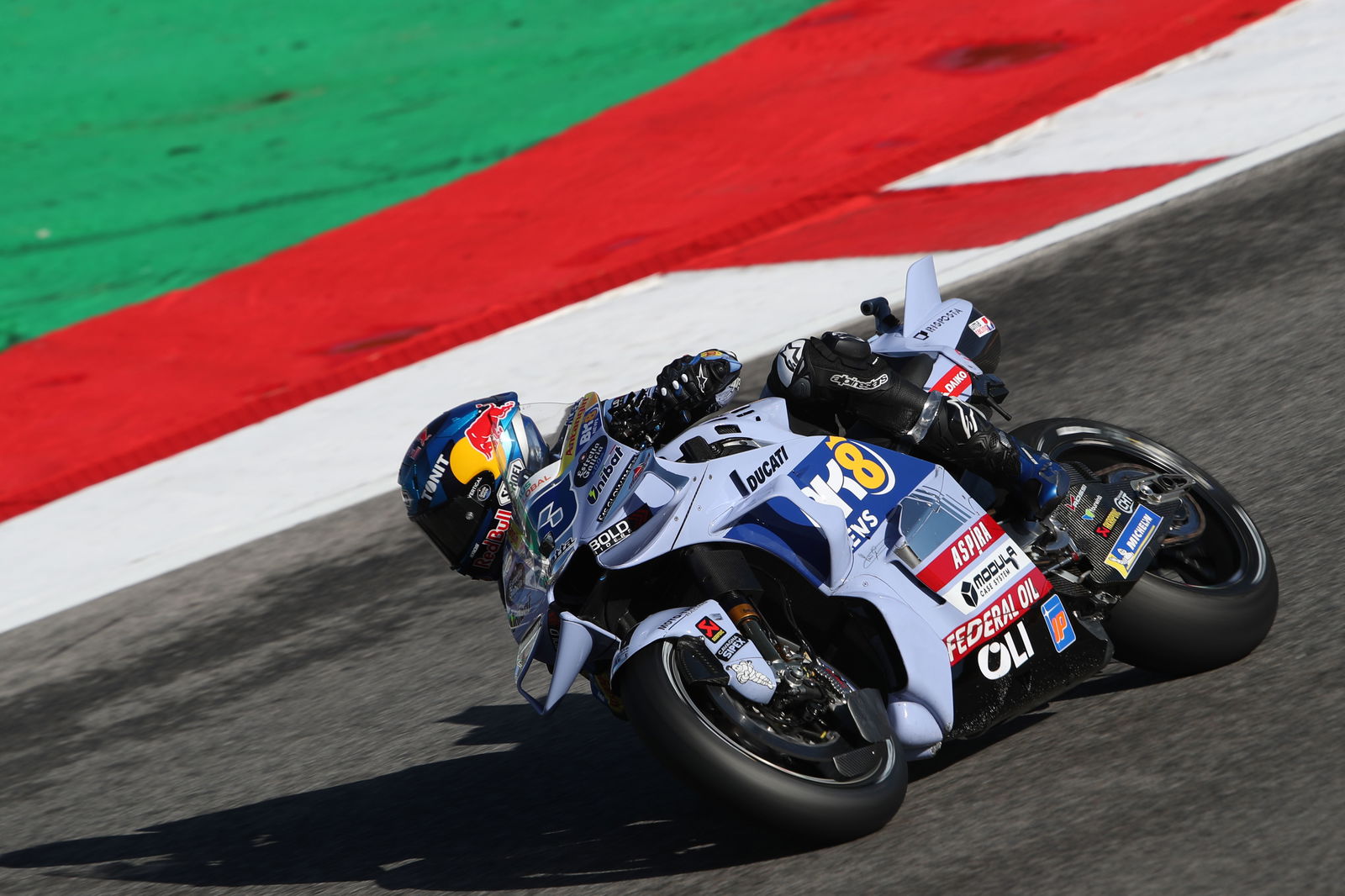
Marc Marquez’s absence a big what-if for Ducati in Portugal
Bezzecchi was pretty humble about where this win places Aprilia in the championship conversation for next year: “For sure, now we are not yet at the level of Marc [Marquez], of Alex [Marquez]. We can fight, I think, with Pedro [Acosta], of course, who has been also super-good in the second part of the season. But we must work again, we must continue improving, and hopefully we can reach their level soon.”
Reigning world champion Marc Marquez’s continued absence with a complicated shoulder injury has exposed in recent rounds just how reliant Ducati has been on the 32-year-old in 2025. Alex Marquez has done a fine job trying to pick up the pieces, but the GP24 is long in the tooth at this point, especially against an ever-developing factory Aprilia.
But Alex Marquez was left defenceless in Portugal. Team-mate Fermin Aldeguer put on a good show from 11th on Sunday to finish fourth, albeit some 12.860s behind the winner. The first factory Ducati was VR46’s Fabio Di Giannantonio in eighth, who was 20.612s off the lead.
Pecco Bagnaia was on course to finish at least fourth on the factory team Ducati before he crashed out on lap 11 of 25. But the double world champion went AWOL in the sprint, as he slumped from fourth on the grid to eighth. After three laps of the grand prix, he was already 1.7s off the podium, and that gap only got bigger.
Relative to Alex Marquez’s pace in those first 10 laps, Bagnaia was almost half a second per lap slower. As of lap five Bagnaia was already dropping into the 1m39s.
| Laps | AM73 (H/M) | PA37 H/M) | PB63 (H/M) |
| 2 | 38.392 | 38.648 | 38.915 |
| 3 | 38.253 | 38.237 | 38.804 |
| 4 | 38.483 | 38.559 | 38.872 |
| 5 | 38.399 | 38.639 | 39.119 |
| 6 | 38.53 | 38.848 | 39.155 |
| 7 | 38.719 | 38.91 | 39.029 |
| 8 | 38.842 | 39.17 | 39.35 |
| 9 | 38.513 | 39.338 | 39.23 |
| 10 | 38.983 | 39.098 | 39.042 |
| Average pace | 1m38.568s | 1m38.827s | 1m39.057s |
| Difference | 0.259s | 0.489s |
The crash, he said, was a result of him pushing to try to close down the group ahead but keep the riders behind at bay. He felt, at least, that crashing while pushing in fourth was better than when he fell out of 12th in Australia or near the back in Indonesia. But, clearly, Ducati is not really any closer to unlocking the form expected of Bagnaia.
And now he is on the edge of finishing fifth in the standings, with Acosta only three points behind him going into Valencia.
Would Bezzecchi have been as dominant as he was last weekend had Marc Marquez been racing? That’s something Ducati will be pondering. But, as Aprilia continues to get stronger, Ducati’s desire to start working on improving for 2026 has frozen with the seven-time world champion’s absence.
It can’t do anything with Alex Marquez until next Tuesday at the Valencia test, when he jumps on a factory Desmosedici for the first time. And it hasn’t gotten consistent enough form out of Bagnaia or Di Giannantonio to entrust either to do much for 2026 at this stage.
As Aprilia goes from strength to strength, the pressure is mounting on Ducati in a way that it hasn’t seen since it emerged with the grid’s best bike in 2021.
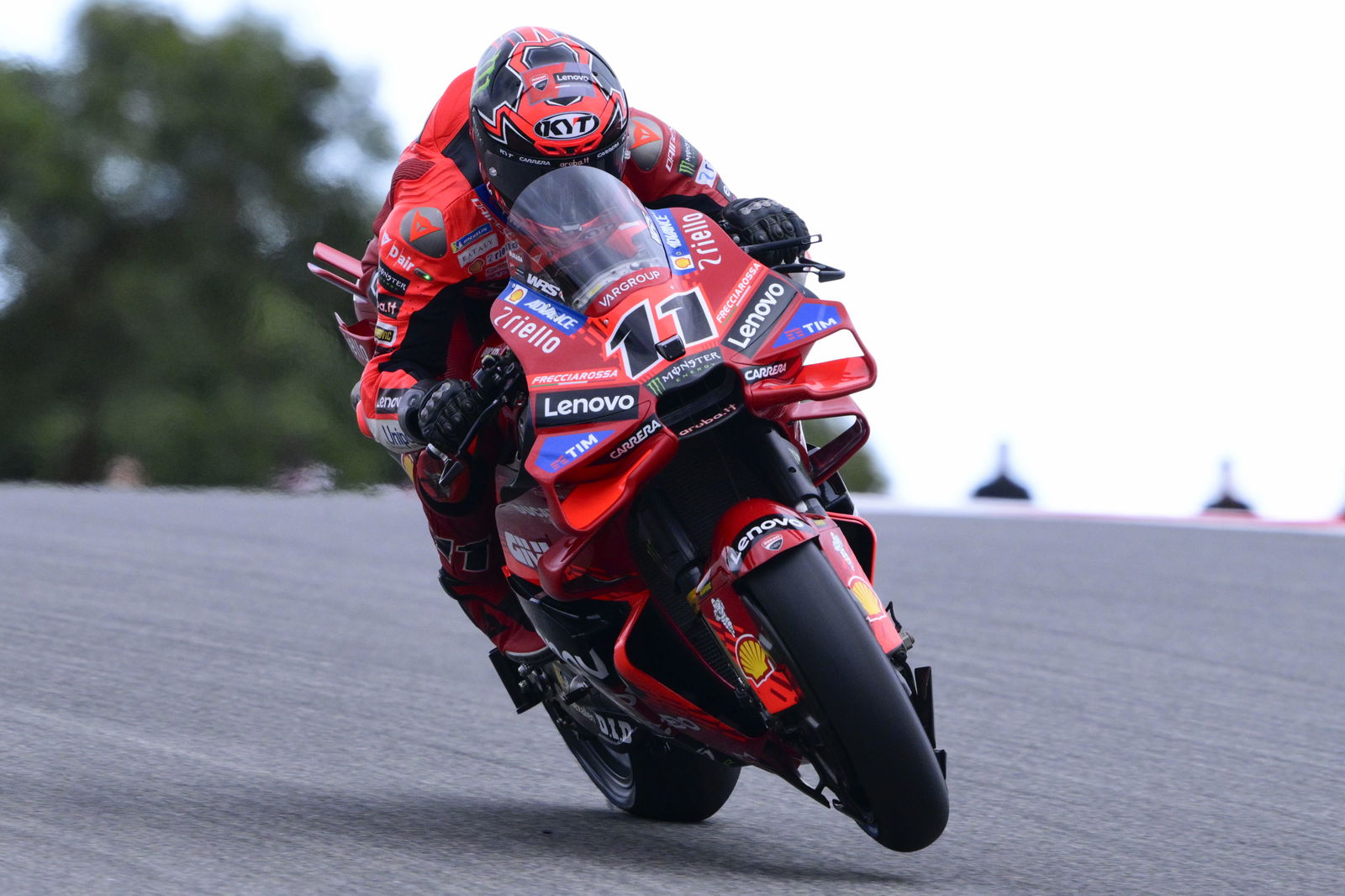
A promising debut for Nicolo Bulega
While times may be tense at Ducati right now, Marc Marquez’s injury layoff has offered an opportunity for the brand to begin getting World Superbike star Nicolo Bulega up to speed with MotoGP machinery as he gets set to spearhead 2027 development next year.
The Italian, formerly a member of the VR46 Academy, got to make his 100th grand prix start last weekend as a factory Ducati rider. It’s a story that really didn’t look possible when he left the grand prix paddock at the end of 2021, when his form in Moto2 had dropped off a cliff.
Rebuilding his career and his confidence in the World Superbike paddock from 2022, with a championship run in Supersport in 2023, before advancing to Superbikes with Ducati, Bulega is now on a collision course with a full-time MotoGP race role in 2027.
The switch to Pirelli tyres for the regulation reset in 2027 has put Bulega in a fortuitous position. Ducati needs someone with experience of that rubber to help develop the new 850cc bike, and he has done enough to prove that he is more than capable of doing so.
The Portuguese and Valencia Grands Prix provide him with a chance to properly assess 1000cc machinery and Michelin tyres, so he can have some useful data for comparison during his testing duties in 2026.
He began the Portimao weekend with an impressive run to 14th in FP1. He qualified a decent 18th, but his muscle memory of Pirelli rubber led to him crashing in the sprint. The Pirelli’s require a very aggressive braking style, which the Michelins just don’t support. It was a crash that Toprak Razgatlioglu will likely have to get used to in his early adaptation to the Yamaha next year.
In the grand prix, Bulega rode a steady race. Across the first 10 laps prior to Bagnaia’s crash, he was around 0.884s per lap slower. Relative to a rider who has ridden the Ducati since 2019, that’s very impressive.
| Laps | PB63 (H/M) | NB11 (H/M) |
| 2 | 38.915 | 40.352 |
| 3 | 38.804 | 39.762 |
| 4 | 38.872 | 39.845 |
| 5 | 39.119 | 39.979 |
| 6 | 39.155 | 39.88 |
| 7 | 39.029 | 39.872 |
| 8 | 39.35 | 39.846 |
| 9 | 39.23 | 40.066 |
| 10 | 39.042 | 39.865 |
| Average pace | 1m39.057s | 1m39.941s |
| Difference | - | 0.884s |
Bulega took the chequered flag in 15th for his first points, having rallied late on to get his pace back into the high 1m39s. It wasn’t a trouble-free race. He made a mistake at one stage that dropped him several seconds behind the riders ahead of him. But he chalked that up to just being a part of the learning process.
Expectations should remain low for the Valencia finale this weekend. But Bulega’s time in MotoGP has started in promising fashion…
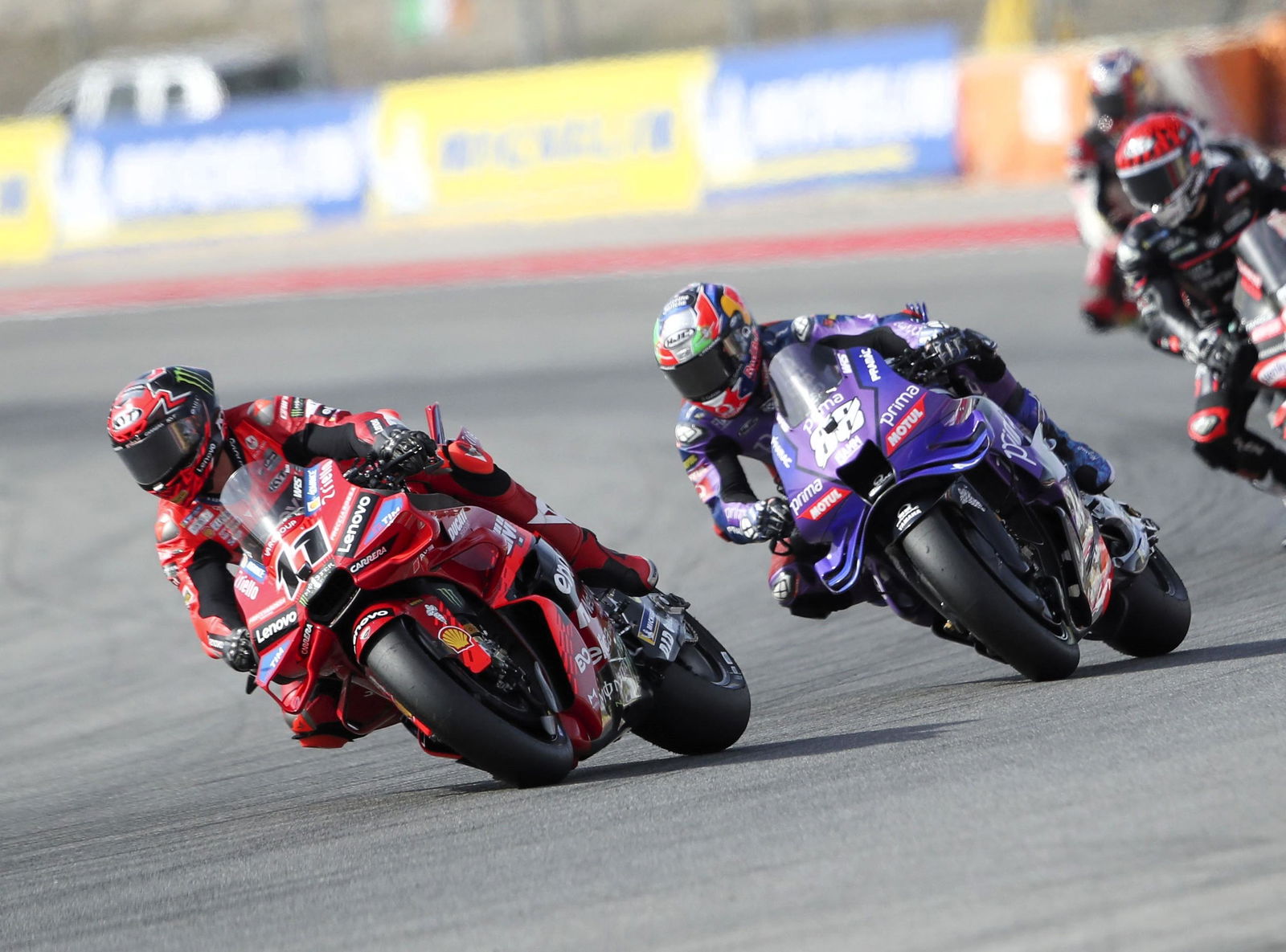
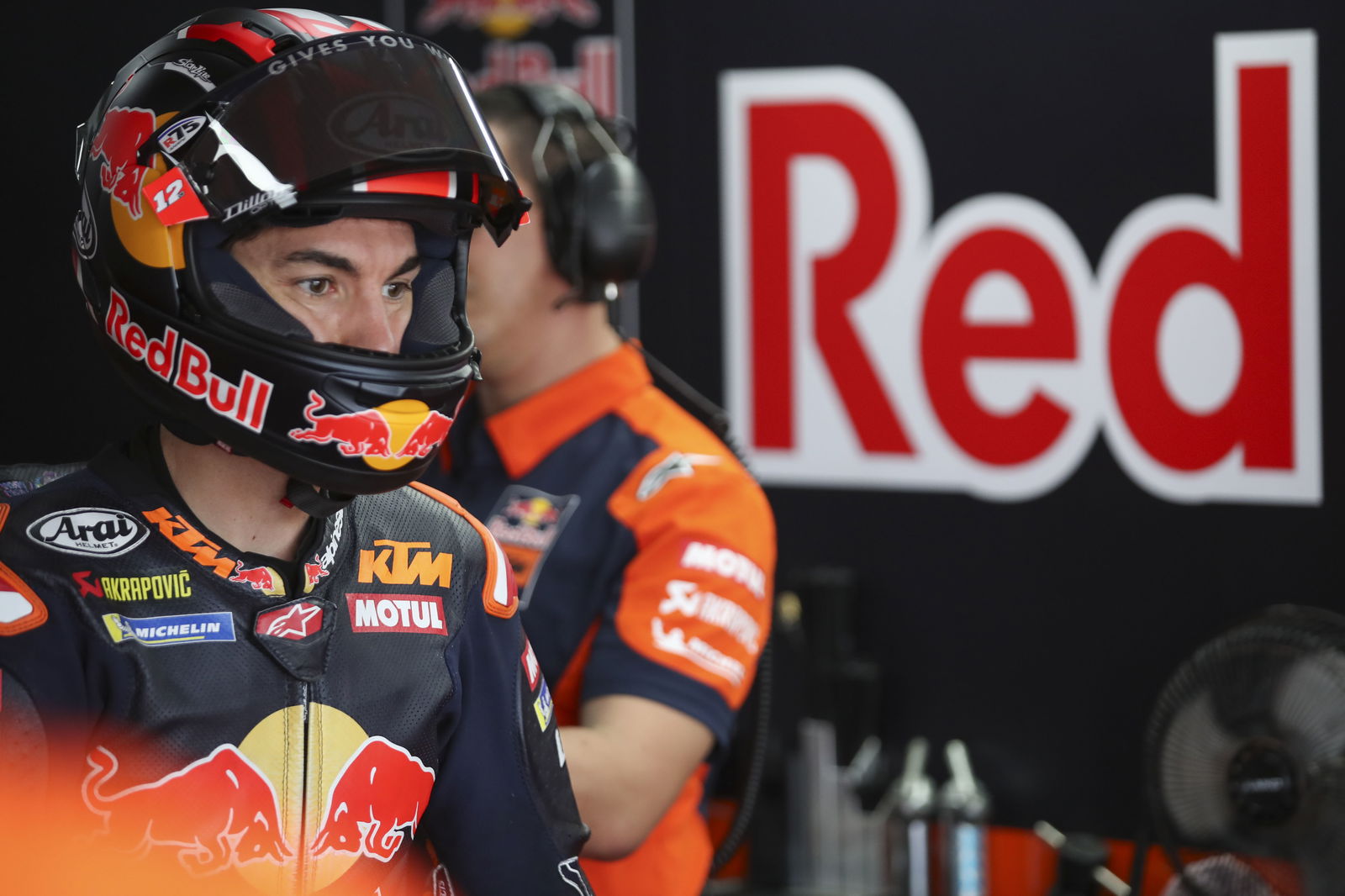
.jpg)